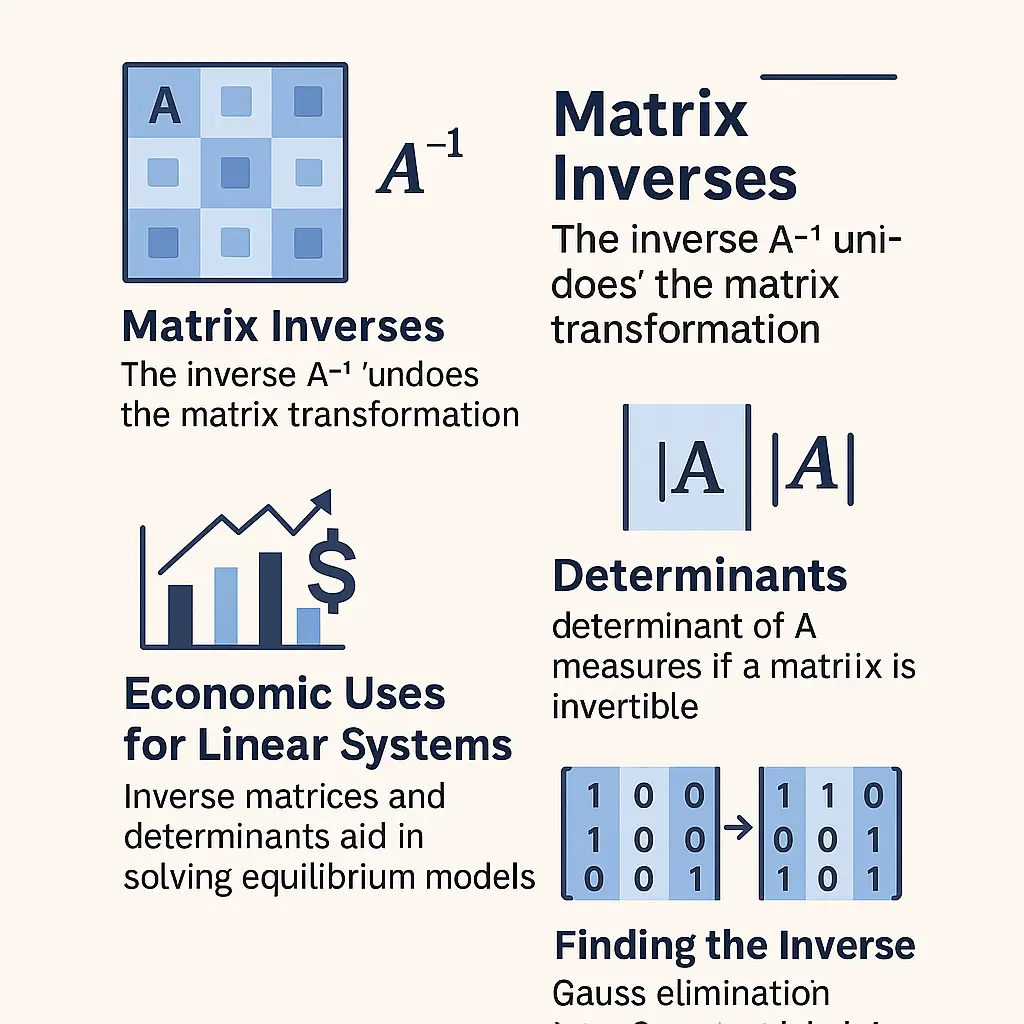Introduction
In modern economic analysis, matrices are more than just tables of numbers. They form the core of modeling systems of equations that appear in resource allocation, input-output models, pricing systems, and equilibrium analysis. In this blog post, we explore how inverse matrices and determinants help us solve square linear systems efficiently and what they mean in applied contexts.
1. What Is an Inverse Matrix?
If is a square matrix, its inverse (when it exists) satisfies:
Where is the identity matrix. The inverse allows us to solve systems of the form:
How Do We Find It?
We use the augmented matrix and apply Gauss elimination to reduce it to .
2. Linear Independence and Rank
Vectors (or matrix columns) are linearly independent if no vector can be written as a combination of others. This matters because:
- If a matrix has full rank (equal to its number of rows or columns), it is invertible.
- Rank can be found by converting a matrix into row echelon form and counting non-zero rows.
Application in Economics:
- Ensures that variables (like inputs or goods) contribute uniquely to output.
3. Properties of Inverses and Transposes
These are vital in multivariate models where transposition and inversion are used to manipulate coefficient matrices.
4. Determinants and Their Role
The determinant is a scalar that captures certain properties of a square matrix:
- If , the matrix is invertible
- If , the system may be inconsistent or have infinite solutions
Economic Example:
In systems modeling market balance across 3–4 variables, checking the determinant can confirm whether a unique solution exists (market equilibrium).
5. Computing Determinants
- For 2×2:
- For 3×3: Use cofactor expansion or row operations
- The determinant of a triangular matrix is the product of its diagonal elements
Efficient Tip:
Transforming into upper-triangular form via Gauss can make computing easier.
6. Solving Systems with Cramer’s Rule
Cramer’s Rule uses determinants to solve systems:
Where is formed by replacing the -th column of with .
Example:
Given , and , then:
When to Use:
- Best for small systems
- Becomes computationally expensive for larger matrices
7. Special Cases
- If and any : no solution (inconsistent)
- If and all : infinite solutions (underdetermined)
In Homogeneous Systems:
- If : only solution is the zero vector
- If : infinite solutions (nontrivial dependencies)
Conclusion
Inverse matrices and determinants are not just abstract concepts—they give us control over economic systems. Whether we’re analyzing input-output models, solving for equilibrium, or identifying dependencies in production factors, these tools provide structure, predictability, and confidence.
Understanding these principles empowers students and professionals to model, solve, and interpret real-world systems effectively.
Further Reading
- Anton & Rorres, Elementary Linear Algebra
- Gilbert Strang, Introduction to Linear Algebra

